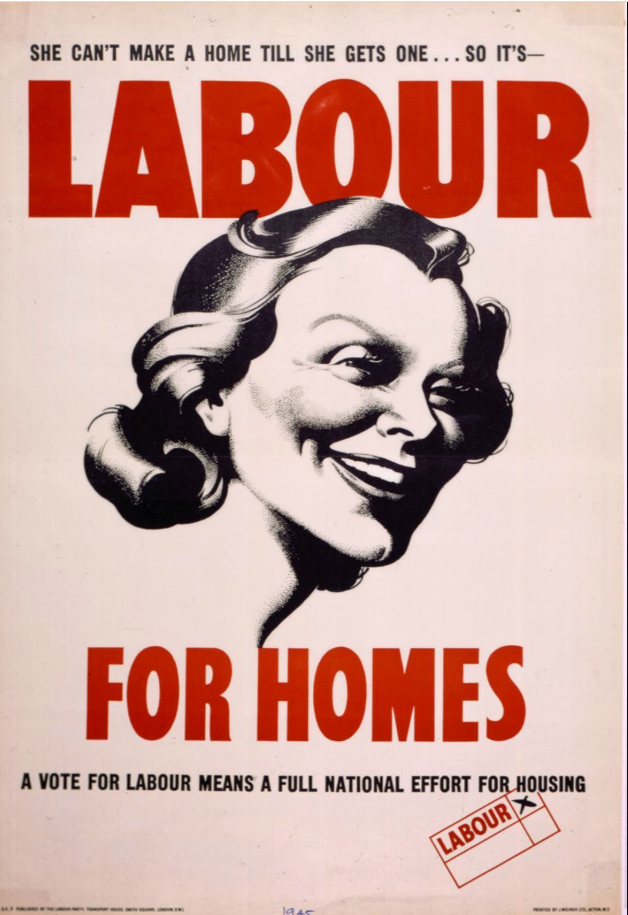For a significant number of young and low-income people housing affordability is getting worse. Housing affordability, or the lack thereof, is a concept widely understood by those living in the United Kingdom. Or is it?
On 8th July 2020, a ground-breaking new book was published by Bristol University Press. ‘Understanding Affordability: The Economics of Housing Markets’, by Professor Geoffrey Meen (Reading University) and Professor Christine Whitehead (LSE). The book sets out to unpick the complex forces exacerbating the endemic unaffordability of UK Housing. Thankfully, it offers insight and recommendations to improve our country’s dire situation.
Using ‘price-to-earning’ ratios and ‘housing expenditure’ indicators are not the right approach
When discussing housing affordability we often use ‘price-to-earnings’ ratios. Although questions remain about whether this metric is even at all suitable. This is because affordable ‘for whom’ is a question consisting of several interrelated elements, which beyond price should include physical adequacy and overcrowding.
Some argue that using such metrics will not produce any significant improvement in affordability. This is primarily because social norms and demand-side behaviours we find play a crucial role in price determination. We must recognise demand remains a key factor in determining housing affordability.
Meen and Whitehead argue that looking at expenditure indicators alone can be highly misleading. Affordability concepts have their roots in 19th century studies of household budgets. For example, at the turn of the century the USA used the 25 per cent rule of thumb for affordability. This was based on one week’s pay for one week’s rent. Rules like this have informed both mortgage lending and housing policy alike.
More sophisticated approaches using the ‘Lorenz Curve’ tell us more about affordability
The book claims that more complex approaches recommended in academic literature have often been overlooked. This is particularly prevalent in housing policy arena and contemporary political discourse.
“We all know that this country does not have enough homes… the median house price in England is eight times higher than median gross annual earnings; in London, it is 12.3 times higher”
Minister for Housing, Christopher Pincher MP – March 2020
Source: Hansard
Price-to-earnings ratios sadly provide no information on the distribution of outcomes across household types and income levels. The authors are critical of how such flawed basic measures make it into planning policies. For this reason they say it is “worrying that it is still widely used”. Housing expenditure indicators such as rents and mortgage payments relative to incomes are also heavily criticised.
Ratios for example cannot distinguish between households with different income levels adequately. Are these metrics providing us with useful information to make meaningful policy recommendations? They suggest not. It is the distribution of incomes and wealth relative to the distribution of house prices that determines who can afford what. Not metrics that make use of averages such as the price-to-earnings ratio.
Research on affordability undertaken in the first chapter estimated affordability for First Time Buyers (FTBs). In it the authors based their research on variations of a ‘Lorenz Curve’. This approach uses a graphical distribution of the equality of affordability, which easily shows what proportion of FTBs can afford what proportion of housing stock. A quick look on Hansard results in not a single reference to such terminology in the past 10 years.
Measures of inequality still require closer attention despite painting a clearer picture
Research in the book suggests the use of a Gini coefficient to account for regional inequality. This is an index that measures inequality created by Italian statistician Corrado Gini. We can compare how distribution of income in a society compares with another if everyone earned the same amount. A Gini coefficient of zero means everybody is equal. If we measure a Gini coefficient of 1 it shows a single person earning all the income.
Despite being technically sound, using Gini coefficient’s is still criticised by some. Summer and Cobham argue that it does not adequately capture changes in the top 10% of the income distribution, nor the bottom 40%. In turn, due to the under sensitivity of the measure at the extremes, they consider the Palma ratio more suitable. For example, if the richest 10% have five times more income than that of the bottom 40% then the Palma ratio would be 5.
When undertaking a more rigorous analytical approach we find housing affordability issues persist across the country, even in the North East
The Gini coefficient in the South East is 0.70, thus displaying a high degree of inequality. In this region a household with a median income would be unable to afford to purchase a property without paying more than 30% of their income on housing costs. There are no surprises there, but it does highlight where housing affordability is most acute.
By comparison existing homeowners who wish to move, even those in the lower income ranges, could afford to move to higher value properties without paying more than 30%. Some people in this group are effectively able to make hay much easier than those without accumulated equity.
On this more complex indicator, the research shows that to afford a property in the first decile (lowest 10%) of property prices in the South East, you still would need to earn over the median income. The difference between the ‘haves’ and the ‘have nots’ is demonstrably clearer when using such methods.
Yet in the North East, where inequality is much lower considering its Gini coefficient of 0.30, there are still significant proportions of households who cannot afford to buy properties in the lowest decile. This means that after considering the full distribution of incomes, rather than just averages, affordability for FTBs is not just a problem for the South of England.
Forward thinking Local Authorities should be reflecting on these new affordability indicators to assess the distributional consequences of policy changes. A key takeaway is to recognise that housing affordability is not just a South of England phenomenon.
When determining housing policy we need to better understand demand-side factors
The book reflects international comparisons of the average annual growth in real house prices between 1970 to 2015. Over this period Germany had -0.3% growth in house prices while the UK had more than +3.5%. Yet looking at the comparison relative to wages suggests there is more than meets the eye. In this context house price growth in Germany was -1.9%, while in the UK +1.3%.
Since 1970, German housing stock growth relative to incomes has proven relatively constant, suggesting supply is less of an issue. We think this because even after factoring in incomes relative house prices were even lower. This is despite the rate of growth in housing stock remaining constant.
In the UK levels of growth in housing stock relative to incomes have fallen by around 1.5% per annum. This means wages have been outpacing growth in housing stock. From a fundamental economic standpoint, it is no wonder house price growth has been going one way. Clearly we must acknowledge that worsening affordability and rises in real prices in the UK relative to Germany are as much a result of demand-side factors, as it is a lack of supply.
The British psyche of wanting to own one’s own home may play a pivotal role in explaining why we may have had different house price growth to that found in Germany. Our willingness to spend more on housing costs as our incomes increase, perhaps to achieve social norms such as home ownership, is alluded to as an explanatory factor.
The nature of UK housing demand means prices respond quickly to growth in incomes
Low-interest rates can exacerbate housing market price volatility. But it does not explain the long-run trend of increasing price-to-earnings ratios. Historically the UK’s housing stock has grown at a slower rate than income. Professor Meen and Professor Whitehead argue that price-to-earnings ratios can only be constant over the long-run if household incomes grow at the same rate as growth in housing stock.
We must acknowledge that we have a stronger responsiveness to demand pressures in the UK, than in say Germany. Understanding this can help us deconstruct some of the price drivers behind making affordability worse. It is difficult to tackle the issue of affordability with supply alone when the demand impact from incomes is so strong. As a result the UK is prone to faster deterioration of affordability.
Understanding this is a key factors of the counterargument to Ian Mulheirn’s claim there is no housing shortage. Mulheirn’s own paper had a peer review by this book’s author, namely Professor Geoff Meen. In the peer review he explained that it is neither population nor the number of households that affects demand; rather demand needs backing by income to impact house prices.
Surprisingly, Ian’s claims still seem to be gaining traction, most recently by Stephen Bush, who has become “increasingly persuaded” by Mulheirn’s claim that supply has not contributed to the growth in price-to-earnings ratio since the 1990s.
Conventional wisdom is that rises in real house prices reflect a shortage of homes and that the current planning system plays a significant role. The book also demonstrates that increases in housing supply can improve affordability, but that changes need to be large and sustained to produce a noticeable effect. They also acknowledge that a general expansion in private supply does not necessarily filter down to those on low incomes.
The UK demand drivers see income growth translate into higher prices more readily
Fundamentally Meen and Whitehead argue that income growth (and its distribution) reflects demand, whereas housing stock reflects supply and is affected by conditions and policy in land markets. Meen and Whitehead reaffirm that in making such statements, demand must be backed up by income to influence house prices.
In the UK, the demand drivers see income growth translate into higher demand for housing services, which is more likely to translate into owner occupation. This is a sector where the quality of housing stock is generally higher than in the private rented sector.
The book does not deny the unassailable fact we need more funding for social housing. But also acknowledges the total supply of land for housing has been severely restricted. This has led to increased land values off the back of strong demand-determined increases in house price, exacerbated, of course, by easy credit. It is after all the trend which investors and developers have followed all along.
We need to re-calibrate the balance of concerns when discussing supply, demand, and characteristics of investment behaviour
Some have pointed to investor behaviour, low cost of capital, and attitudes of housing being an investment asset as causes of our problems. However, while there is no doubt these have contributed to the trends in price in recent years, research in the book demonstrates that this alone cannot account for the strong growth rate of 3.5% per annum since 1969.
We must accept that rising real house prices are not only a question of supply and investment demand but that it is also very much related to consumption demand.
To stress the point, the authors do not say that supply and investment characteristics are unimportant, rather that there has been a distortion of the balance of concerns. We cannot say it is just supply, or solely interest rates, which has led to this crisis of affordability. Thus, whenever we are framing the narrative, we must not forget to consider demand.
If we keep this in mind when looking to use more sophisticated ways of measuring affordability, while avoiding shallow rule-of-thumb metrics, we may be able to truly understand exactly who in our housing market is being failed by Government. Only then will we be able to devise policy to address it.



